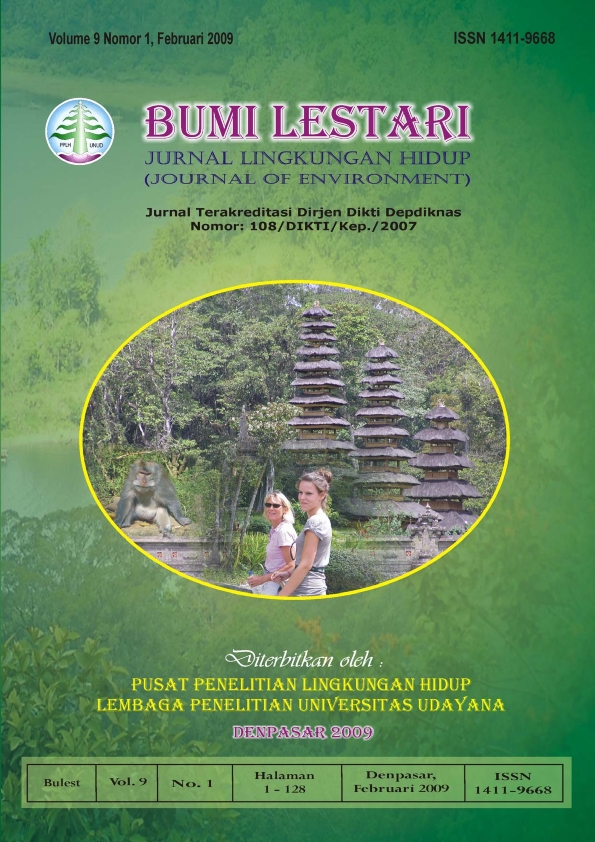PENGARUH LETAK SARANG DAN KERAPATAN TELUR TERHADAP LAJU TETAS TELUR PENYU HIJAU (Chelonia mydas)
Abstract
This research was conducted in Tanjung Benoa Village, Subdistrict of Southern Kuta, Badung Regency, Bali between February 7, and April 12, 2006. The aim of this research was to observe the length of hatchery of eggs of green turtles (Chelonia mydas) in two places. Those places were: (1) which was freely exposured to the sunlight and (2) which was not freely exposed. These two places were set up to be closely to the natural (semi natural) nesting sites where eggs eggs being put underground in different densities. Factorial Randomise Block Design was applied in this research. The first factor was the density of eggs that was 40, 50, and 60 eggs in each hole and the second factor was the location of nest, whether was or was not freely exposed to the sun light. There were 4 replicates made, so the total eggs of C. mydas utilised in this research was 1200. Result of this research indicated that the hatching rates from various mean at calm place was better than those of the other place (did not calm) – higher hatching rates 4.34% (P<0,01), shorter hatching time (day) 2.5 (P<0,01) and hatchlings were bigger in size 0.14% ( P<0,01). The density of eggs of 50 for every nest was found to be significantly better (P<0,01) compared to those of the density of 40 and 60. Temperatures in calm place and that was not calm in the morning, during the mid day and in evening were 18.1600 C, 21.660C, 19.750C and 19.660C, 30.750C, 27.330C respectively.Downloads
Download data is not yet available.
Published
2009-02-01
How to Cite
SUKADA, I Ketut.
PENGARUH LETAK SARANG DAN KERAPATAN TELUR TERHADAP LAJU TETAS TELUR PENYU HIJAU (Chelonia mydas).
Bumi Lestari, [S.l.], v. 9, n. 1, p. 54-60, feb. 2009.
ISSN 2527-6158.
Available at: <https://ojs.unud.ac.id/index.php/blje/article/view/617>. Date accessed: 04 nov. 2025.
Issue
Section
Original Research Articles
Keywords
green turtle; eggs; density; hachling; artificial nest
Authors who publish with this journal agree to the following terms:
- All articles published by Bumi Lestari Journal of Environment and Environmental Reseach Center Udayana University are made available under an open access license worldwide immediately. This means everyone has free and unlimited access to the full-text of all articles published in Bumi Lestari Journal of Environment, and everyone is free to re-use the published material given proper accreditation/citation of the original publication. Open access publication is supported by authors' institutes or research funding agency by payment of a comparatively article processing charge for accepted articles (See Author Fees). Bumi Lestari Journal of Environment and Environmental Reseach Center Udayana University publish articles under the Creative Commons Attribution License.
- Authors are able to enter into separate, additional contractual arrangements for the non-exclusive distribution of the journal's published version of the work (e.g., post it to an institutional repository or publish it in a book), with an acknowledgement of its initial publication in this journal.
- Authors are permitted and encouraged to post their work online (e.g., in institutional repositories or on their website) prior to and during the submission process, as it can lead to productive exchanges, as well as earlier and greater citation of published work (See The Effect of Open Access).





